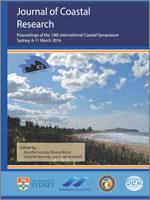Miot da Silva, G. and Shulmeister, J., 2016. A review of coastal dunefield evolution in Southeastern Queensland. In: Vila-Concejo, A.; Bruce, E.; Kennedy, D.M., and McCarroll, R.J. (eds.), Proceedings of the 14th International Coastal Symposium (Sydney, Australia). Journal of Coastal Research, Special Issue, No. 75, pp. 308–312. Coconut Creek (Florida), ISSN 0749-0208.
The Southern Queensland subtropical coastline represents a major depositional system containing 3 of the largest sand islands in the world. The surface of these sand masses comprises foredune ridges and predominantly large transgressive dunefields, deposited episodically during the Quaternary. The chronological sequence of these dunefield phases, however, is still poorly understood. This paper summarizes the information available regarding dunefield transgression events on the southern coast of Queensland and indicates that both marine and climate effects are important controlling factors for dunefield evolution but that an understanding of the relative thresholds of each factor as the main trigger of dune emplacement phases remains a challenge.





